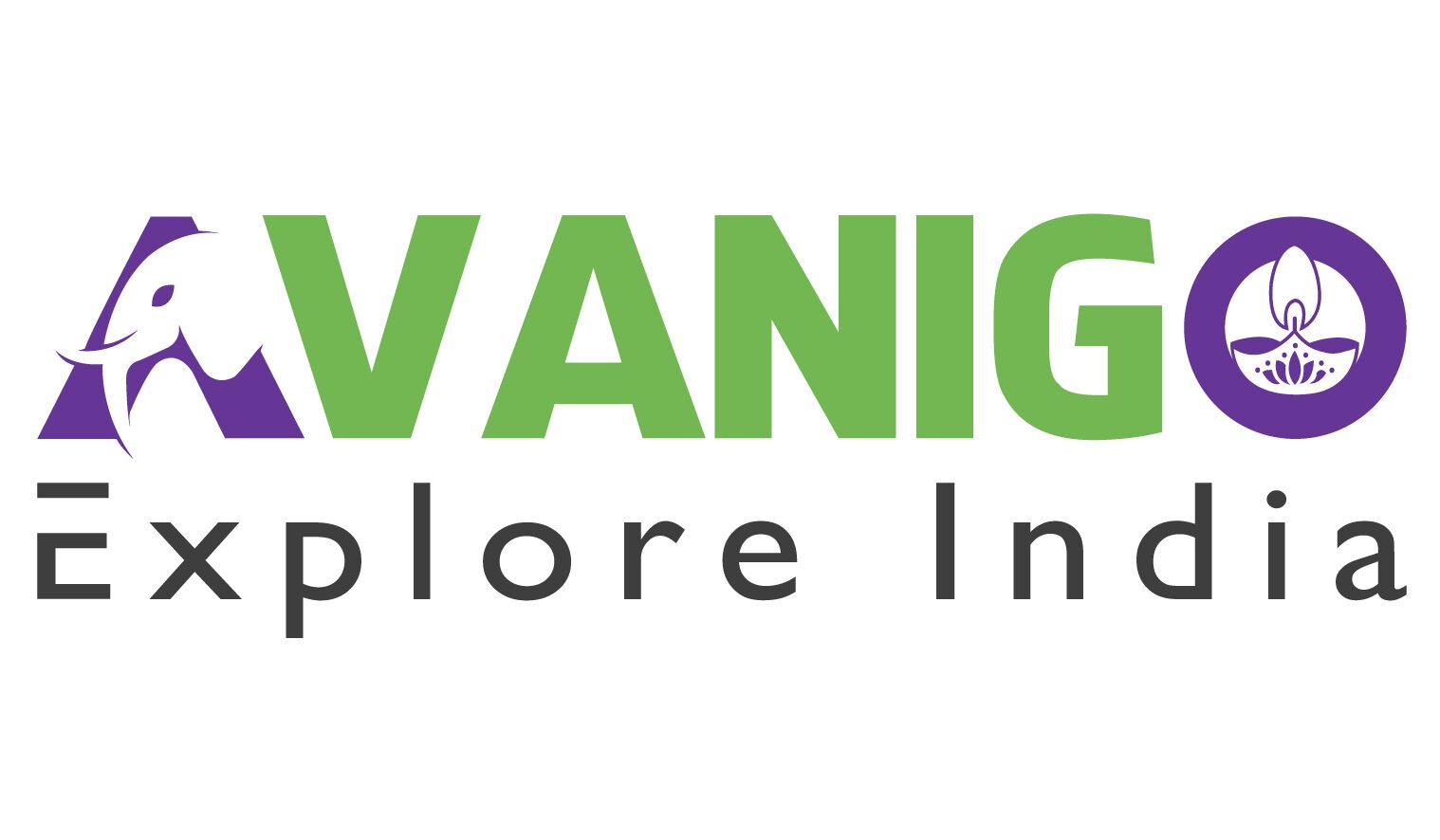According to historical pieces of evidence, the advent of Yoga dates back to 5,000 years ago in the Indus Valley Civilization. The word “Yoga” first saw its reference in the Rig Veda.
The evolution of Yoga included innovation, practice, and development over time. In the 20th century, Yoga gained global attention after being instituted in western culture by Swami Vivekananda. Since then Westerners have not just embraced this discipline but also innovated it in many ways.
One such innovation that has gained immense popularity in recent times is Power Yoga. Power Yoga is a dynamic vinyasa-style yoga and is an offshoot of Ashtanga Vinyasa Yoga. Vinyasa means “flow” and so, Power Yoga incorporates poses done in a flow or a sequence.
Power Yoga is a customizable form of Yoga that can be taught differently in different yoga classes. Teachers are free to modify the poses and their orders, hence making each class interesting.
Not everyone can practice Power Yoga. People who have undergone surgeries or pregnant women are not recommended to practice Power Yoga.
Quick Navigation
The History of Power Yoga
Power Yoga saw its origin in America in the mid-1990s.
- In 1927, Shri K. Pattabhi Jois started studying Yoga along with Sri T. Krishnamacharya who laid the foundation of modern yoga in the West.
- In 1938, Indra Devi, the mother of western Yoga, joined Pattabhi and B.K.S. Iyengar, and went on to become the first non-Indian female yogi.
- In the early 1950s, Magna Baptiste studied under Indra Devi and opened a yoga studio in San Francisco along with her husband.
- The first-generation American students who learned Ashtanga Yoga from Pattabhi in Mysore in the early 1970s were David Williams and Norman Allen.
- Later, in the 1990s, Williams and Allen passed on their mastery to two second-generation students, Bryan Kest and Beryl Bender Birch respectively.
Bryan Kest and Beryl Bender Birch reformed the rigid Ashtanga Yoga into a simplified, intense, and sequential style of yoga called Power Yoga. Bryan Krest is a yoga guru who belongs to Los Angeles. Beryl Birch is a yoga teacher who belongs to New York.
Bryan Krest later studied with Pattabhi in Mysore, India. While performing Ashtanga poses under his mastery, Bryan pushed the envelope by trying out new techniques, thereby bringing flexibility in the dogmatic Ashtanga Yoga. He performed all this without any dissent or concern from his master, Pattabhi.
Simultaneously, Beryl Bender Birch formulated the miraculous Power yoga, what yoga journal called “the original Power Yoga” in 1995.
Power Yoga poses:
Child pose (Balasana)
The child pose or Balasana is one of the most basic Power Yoga poses that has derived its name from two Sanskrit words, “bal” and “asana”, meaning a child and a pose respectively. Beginning our yoga session with child pose is the best way to gain energy and set a goal for our workout session.
It is a relaxing and nurturing pose which gives us great relief when it is timed between the exhausting yoga poses. We can perform it for a long time without the help of any props.
How to perform Child pose
- Kneel on the floor with knees hip-width apart and toes folded together towards the back. Inhale and then exhale, keeping your torso above your thighs.
- Try to stretch the spine and ribs away from the tailbone. Stretch the forehead away from the shoulders.
- Place your forehead on the floor and lengthen your arms away from you.
- Take at least 5 deep breaths in this position.
Benefits of Child pose
- Keeps the body’s internal organs functional and flexible.
- Reduces back pain as it stretches and lengthens the spine.
- Maintains blood circulation.
- Reduces fatigue, stress, and anxiety.
- Brings mental peace and strength.
Downward facing dog
Downward facing dog or Adho Mukha Svanasana is a popular Power Yoga pose that involves mild inversion of the body in a dog-like posture. It is an important element of Sun Salutations and can be performed several times during a workout session.
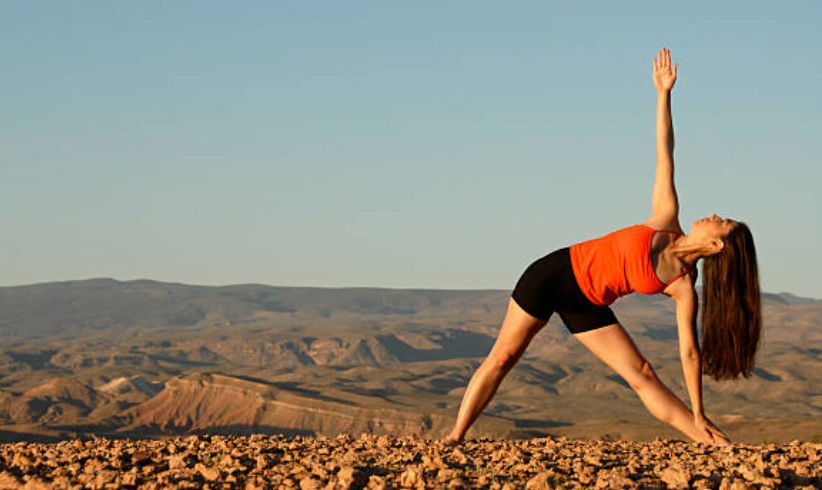
How to perform Downward-facing Dog
- Stand on your four limbs. Keep hands aligned to your wrists and knees under your buttock.
- Exhale and raise your sitting bone above the floor towards the ceiling with your knees slightly bent at first and heels lifted. Straighten your spine and tailbone.
- Keep your fingers wide apart. Stretch the legs as much as possible and look straight to the navel.
- Take at least 5-6 breaths being in this position.
Benefits of Downward-facing Dog
- Helps reduce depression and clams mind.
- Straightens the shoulders, hamstrings, calves, and arches.
- Reduces the symptoms of menopause.
- Helps fight osteoporosis.
- Helps prevent hair loss, discoloration of hair, and baldness.
Upward Facing Dog pose
Upward facing Dog or Urdhva Mukha Svanasana is a power yoga pose that uplifts the upper part of the body, stretching the spine, torso, and arms. Upward facing dog pose is an essential component of Sun Salutation.

How to perform Upward Facing Dog pose
- Lie down with your face on the floor. Keep your legs a few inches apart and the top of your feet on the floor. Bend your elbows and place your arms along your waist.
- Inhale and stretch your arms up to push your torso upward, with your toes a few inches off the floor. Keep the thighs tight and slightly bend inward and shoulders stretched back to open the chest.
- Take a complete breath and return into the Downward Facing Dog pose.
Benefits of Upward Facing Dog Pose
- Strengthens the arms, shoulders, wrists, and spine.
- Helps relieve asthma.
- Provides good posture and makes the body supple.
- Helps relieve mild depression and fatigue.
- Strengthens abdominal organs.
Sun Salutation A
Sun Salutation is a widely performed power yoga pose that consists of a set of poses done in a flow or sequence. Sun Salutation is usually performed in the mornings to greet Lord Sun. The poses are coordinated with a specific breathing pattern- inhalation on stretching and exhalation on bending.

How to perform Sun Salutation A
- Begin with the Mountain pose. Stand straight with feet together and stretch your arms up.
- Bend forward with hands touching the floor and head touching your slightly bent knees.
- Then move your hips down into a half-sitting position. Place your face on your folded knees. Lift your toes to put your weight on them.
- Keep your heels fully on the floor and return to Mountain pose.
Benefits of Sun Salutation:
- Helps the proper functioning of the nervous system.
- Helps blood circulation.
- Strengthens spine, arms, neck, shoulders, ribs, and thighs.
- Tones body and helps maintain a good posture.
- Keeps the cardiac system healthy.
Half-moon pose (Ardha Chandrasana)
Half-moon pose of Ardha Chandrasana is a balancing Power Yoga pose that is a beginner level Hatha asana. While doing this pose, be careful as it might be challenging for those who are not well-versed in yoga basics and do not know to do the Triangle pose.
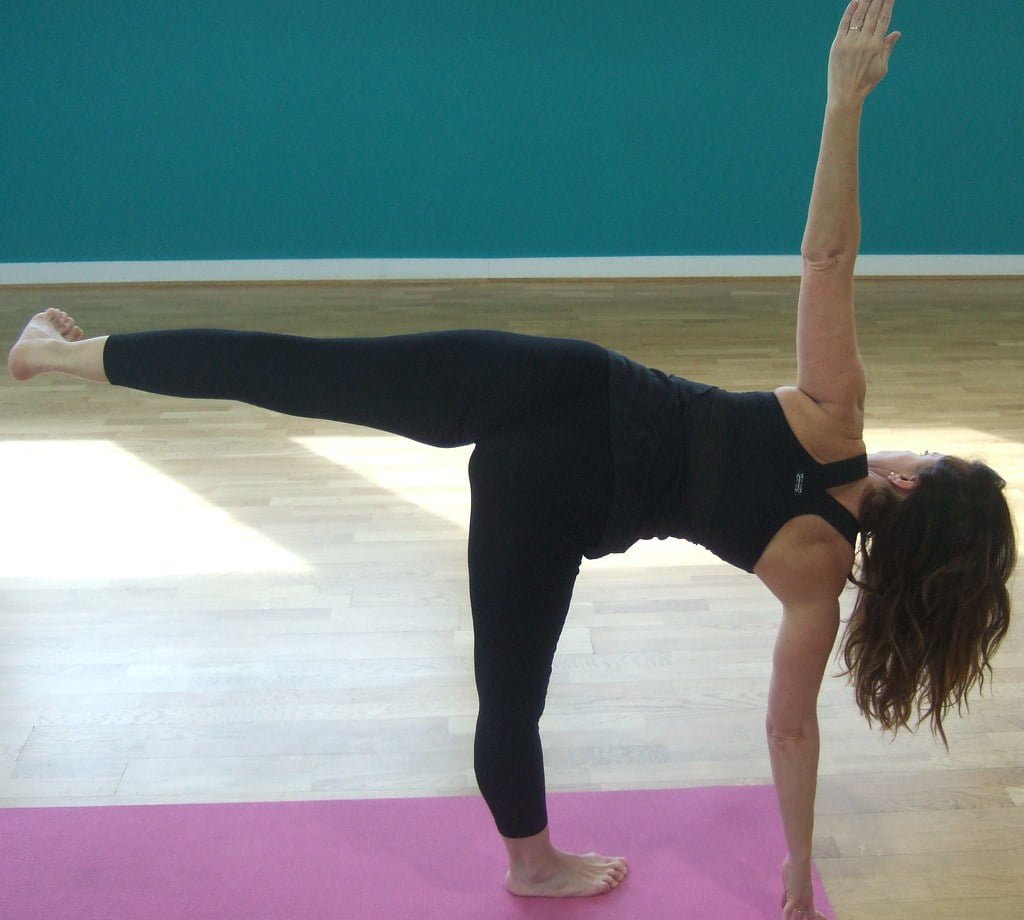
How to perform Half-moon pose
- Begin with the Triangle pose. Move your right leg forward and bend your knees slightly with the left hand placed on your hips
- Keep the right hand on the floor in front of the right foot. For a correct position, keep your hand below your shoulder and 5 to 6 inches to the right of the right foot.
- While standing on your right leg, lift your left leg above the floor. Straighten your left leg as much as you can.
- Stretch your hips apart and bring the left leg parallel to the floor. Be in a position where both the hands along with the chest are perpendicular to the ground.
- Look towards the fingertips of your left hand.
- Take at least five deep breaths until you keep the left leg on the floor. Repeat the pose on the other side.
Benefits of Half-moon pose
- Stretches and strengthens arms, knees, spine, buttock, and legs.
- Improves digestive system
- Relieves mild depression and anxiety.
- Provides good balance and posture.
- Strengthens groins, calves, hamstrings, and torso.
Yoga Poses to Improve Eye Sight
High Plank
High Plank is a commonly performed Power Yoga pose that not just develops our core but contributes to the overall fitness of the body. While doing this pose the whole body is energized and activated.
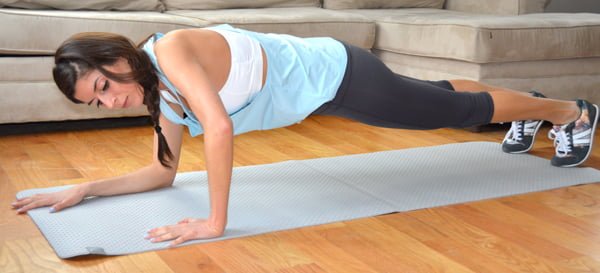
How to perform High Plank
- Keep your hands and knees on the floor shoulder-width apart.
- Raise your chest off the floor and stretch your feet back to fully extend your body.
- While doing so, ensure your feet are shoulder-width apart as putting them together can make it difficult to maintain your position.
- Make a tight core. Keep the hips lifted. Look downward to the floor, making a straight line that connects your neck with your spine.
- Press your palms firmly against the floor and keep them below your shoulders.
- Be in this position for about 10-15 seconds.
Benefits of High Plank
- Develops your core
- Increases metabolic rate
- Relieves backaches.
- Provides a good sense of balance and posture.
- Makes bones and joints strong and healthy.
Chaturanga push-ups
Chaturanga push-ups are a Power Yoga pose that keeps our body parallel to the floor with the help of palms, feet, and elbows kept perpendicular to the body. It is also called triceps push-ups and helps build our muscles. However, it can be challenging for different people in different ways.

How to perform it
- Start from the High Plank
- While exhalation, lower your torso and keep your legs 2-3 inches above the ground.
- Keep your palms slightly closer than shoulder width.
- Broaden your shoulder blades and keep the elbows at the side of your chest.
- Raise your head to look upward.
- Be in this position for 25-30 seconds and then enter the Upward Facing Dog position.
Benefits of Chaturanga push-ups
- Strengthens the muscles of arms, chest, abdomen, and legs.
- Relieves back-related issues.
- Builds a strong and healthy core.
- Gives flexibility and coordination.
- Helpful in preparation for advanced yoga.
Difference between Yoga and Power Yoga
Speed of practice: Yoga is practiced at a slow pace where every pose is coordinated with our breath. The transitions are smooth and steady, and the body movements are slow and follow a rhythmic pattern.
Power Yoga on the other hand is a dynamic and vigorous vinyasa-style yoga. It is done at a fast pace and incorporates poses that are performed in a speedy flow.
Focus: Traditional yoga mainly focuses on the position of body parts. Each body organ has a specific position and shape in yoga. Instructors ensure students follow the guidelines of proper body positioning to deliver maximum results.
On the other hand, Power Yoga focuses on body movements. Power Yoga is faster than traditional yoga and is done in a flow of continuous movements. Hence, one could figure out the movements more clearly than the position of a specific body part.
General Stability: Traditional yoga gives us internal as well as external stability. With internal stability, we mean the proper functioning of internal organs, while external stability denotes the fitness of external organs of the body.
On the other hand, Power Yoga does not provide us with internal as well as external stability. Instead, it helps achieve stability in cardio output. Hence, Power Yoga keeps blood circulation consistent throughout the body.
Benefits: Conventional yoga is beneficial for physical as well as mental wellness. It strengthens the body as well as enlightens our mind and spirit.
However, Power Yoga lays more emphasis on physical wellness. As it is an active and frenetic form of exercise, it keeps our body healthy, flexible, and lean. Hence, people who are more driven towards physical wellness, opt for Power Yoga instead of traditional yoga.
Mental Stability: Yoga is a process of slow and rhythmic body movements where one focuses on the positioning and shape of specific body parts. Hence, mental involvement is high during yoga and mental stability is attained.
On the other hand, Power Yoga is a vigorous exercise that involves swift movements of body organs. Hence, it lays more emphasis on physical aspects than mental stability.
Participation: Everyone can perform traditional yoga regardless of their medical issues. Yoga involves easy steps that can be performed by people of all ages. Yoga does not require an instructor and we can easily perform it at home. Check out simple yoga poses to do in your home.
However, Power Yoga is a complex form of exercise that cannot be performed by everyone. Especially people who have undergone surgery and pregnant women are not recommended to practice Power Yoga. Power Yoga needs an instructor and must be done in a certified yoga class.
Power Yoga and Weight Loss
Practicing Power Yoga is the best way to shed those extra pounds as it provides almost all the benefits of cardiovascular exercise.
- Power Yoga makes our core robust, gives us stamina, strength, and flexibility, and streamlines our body.
- Power Yoga increases lean muscle mass which results in increased metabolism. This helps us in reducing a significant amount of fat.
- Those who are looking for permanent weight loss should add two to three sessions of Power Yoga in their normal cardio routine.
People involved in lifting weights and running should practice Power yoga as this will stretch and lengthen their muscles that contract during such activities. If we are not used to lifting weights, Power Yoga can help us prepare for it by strengthening our muscles.
Power Yoga Poses for Weight Loss
Wind-Releasing Pose
- Lie down on your back. Raise your right leg perpendicular to your body.
- Fold your right leg at your knee joints, hold it with your hands, and bring it close to your face.
- Hold it for 5-6 seconds and then release it. Repeat the same thing with the left leg.

Bow pose
- Lie down on your front. Lift your legs and kick them up from behind.
- Curl your spine and try to touch your toes with your hands.
- Hold it for some seconds and then relax.

Cobra pose
- Lie on your stomach with your legs stretched back. Top of your feet on the floor and hands on the ground under your shoulder.
- Inhale as you lift your head and torso off the floor. Reach only to a level at which you can connect through your pubis to your legs.
- Stretch the tailbone towards the pubis and raise the pubis towards the belly button.
- Stretch the shoulder blades and open your side ribs forward.
- Hold it for 10-15 seconds. Exhale as you return to your normal position.
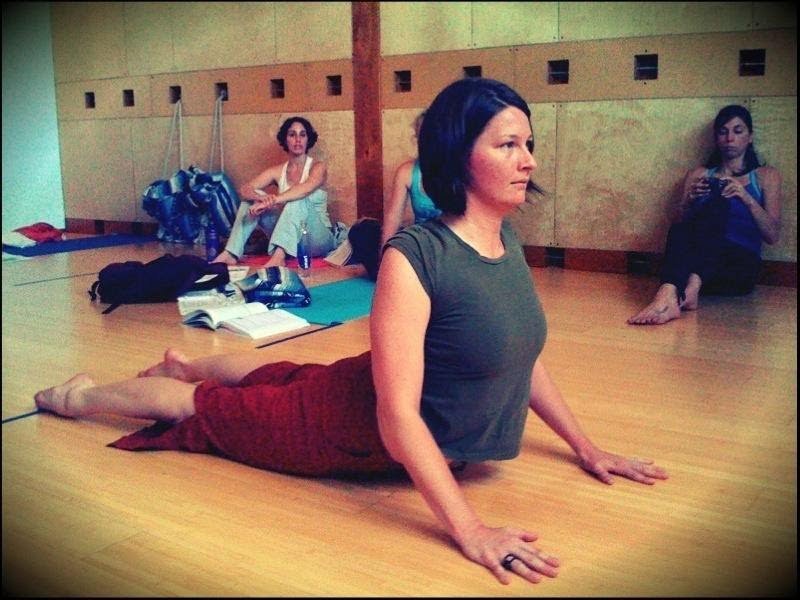
Raised Feet Pose
- Lie down with your back in a resting pose.
- Tighten your abdomen and lift your lower limbs slowly.
- Hold your both legs perpendicular to your body. Feel the stiffness in your abdomen.
- Hold it for 2 seconds and relax.
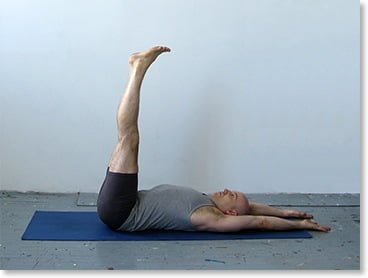
Corpse and Boat pose
- In the corpse pose, you lie down on the floor in a resting position.
- To enter Boat pose, raise your lower limb and upper body with your weight on your hips.
- Feel the stiffness in your abdomen. Stretch your hands outward to balance the weight.
- Hold it for 4-5 seconds and release.

Power Yoga for Back Pain
Almost everyone has faced an issue of back pain at some point in their lives. We get highly irritated in such situations and spend on expensive medicines to treat the pain, only to find that it attacks again after a few days. With the rapid growth of the Yoga industry, doctors are recommending patients with back issues to include yoga in their usual routine.
Power Yoga cannot just help in fighting back pain but also relieves the stress and frustrations that arise due to it. Power Yoga relaxes the stiff muscles of the back, minimizes the pain, and gives us a healthy body with a happy mind. Some of the Power Yoga poses that alleviates back pain are as follows:
Cat-Cow Pose
This easy and accessible Power Yoga pose helps mobilize our spine, torso, shoulders, and necks. It is one of the best Power Yoga poses to relieve back pain.

How to perform cat cow pose:
- Stand on your limbs with your body raised from the floor.
- Inhale while looking up and stretch your abdomen towards the ground.
- As you exhale, look down and curl your spine towards the ceiling. Push your belly button towards your spine.
- Perform this exercise for at least 1 minute.
Downward-Facing dog
This popular and widely performed Power Yoga pose is very relaxing and revitalizing. It brings alignment and balance to the body and helps minimize back pain.
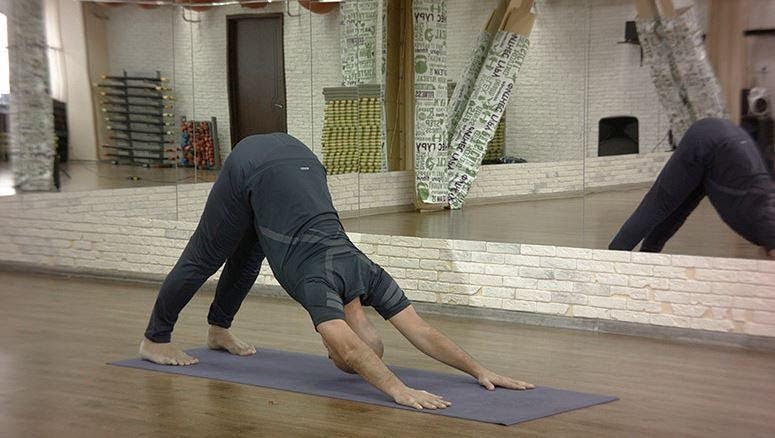
How to perform downward-facing dog pose:
- Stand on your four limbs. Keep hands aligned to your wrists and knees under your buttock.
- Exhale and raise your sitting bone above the floor towards the ceiling with your knees slightly bent at first and heels lifted. Straighten your spine and tailbone.
- Keep your fingers wide apart. Stretch the legs as much as possible and look straight to the navel.
- Take at least 5-6 breaths being in this position.
Triangle pose
This traditional Power Yoga pose stretches hamstrings, groins, calves, and shoulders. It helps relieve back pain and sciatica. At the same time, it calms our minds and reduces anxiety too.
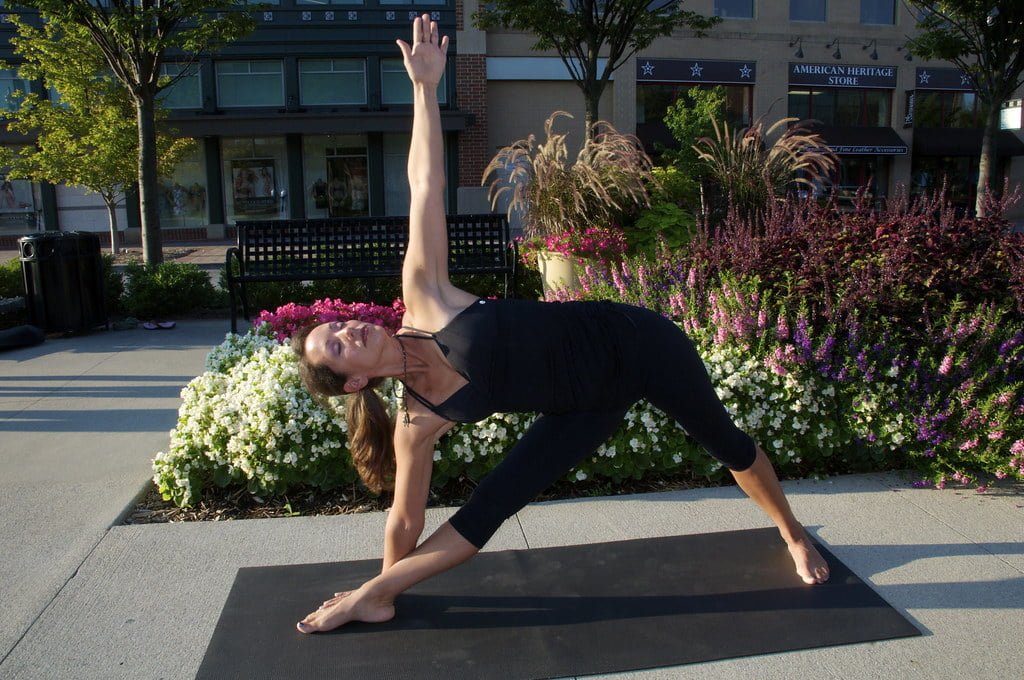
How to perform triangle pose:
- While standing, place your legs about 4 feet apart.
- Keep your arms raised and parallel to the ground. Palms facing the floor.
- Lean forward and keep the right hip tucked, lower your right hand, and touch it with the ground or the right foot, whichever you feel comfortable.
- Keep the left shoulder above the right one and left-hand fingertips facing the ceiling.
- Look towards the ceiling. Hold it for at least 5 breaths.
Sphinx pose
Practicing the Sphinx pose helps relieve back pain, neck pain, and sciatica. It mobilizes the spine, shoulders, neck, and hips.

How to perform sphinx pose:
- Lie down with your belly on the floor.
- Place your palms on the ground. Elbows and the forearms should be kept along the chest.
- Gently raise your torso and head. Slowly lift your lower abdomen to assist your back.
- Make sure you lift your spine up and top of your head out to prevent the collapse of your lower back.
- Look straight to the wall as you perform the pose.
Cobra pose
Cobra pose is a reclining backend pose that stretches and mobilizes our spine, abdomen, and chest. It helps relieve back pain and herniated discs. Besides, it reduces fatigue and tension.
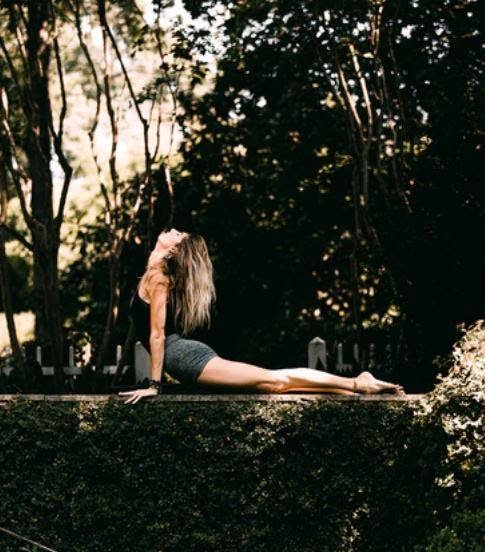
How to perform cobra pose:
- Lie on your stomach with your legs stretched back. Top of your feet on the floor and hands on the ground under your shoulder.
- Inhale as you lift your head and torso off the floor. Reach only to a level at which you can connect through your pubis to your legs.
- Stretch the tailbone towards the pubis and raise the pubis towards the belly button.
- Stretch the shoulder blades and open your side ribs forward.
- Hold it for 10-15 seconds. Exhale as you return to your normal position.
Power Yoga for PCOS Polycystic Ovarian Syndrome
Stress is the biggest fallout of today’s complex lifestyle. Women of today are prone to stress as they are under constant pressure to maintain a work-life balance. One adverse impact that stress can have on women is in the form of PCOS.
PCOS is an acronym of Polycystic Ovarian Syndrome. PCOS is characterized by the formation of fluid-filled sacs called cysts in the ovaries. During PCOS, the female body generates a high level of male hormones such as androgens. Some of the symptoms of PCOS are as follows:
- Irregular menstrual cycle due to no ovulation.
- Excessive growth of unwanted facial and body hair.
- Skin problems such as acne due to hormonal imbalance. Formation of thick, dark patches on the skin- a condition called Acanthosis Nigricans.
- Weight gain.
- Difficulty in pregnancy.
- Mood disorder and fatigue.
- Sleep disorder.
How Power Yoga can help in PCOS
Studies have been conducted that show women with PCOS have shown significant improvements with the practice of Power Yoga. Power Yoga is beneficial for women with PCOS in the following ways:
- The cardio effect of Power Yoga helps reduce obesity that is one of the major symptoms of PCOS.
- Power Yoga relieves stress and anxiety that is closely associated with PCOS.
- Power Yoga is effective in improving metabolic markers such as glucose and insulin resistance values.
- Ensures hormonal balance and regulates the menstrual cycle.
- Makes the digestive system healthy that often gets disturbed in PCOS.
Power yoga poses that help in PCOS
- Butterfly pose: Butterfly pose helps open the pelvic region and groin area that leads to stress relief and in turn regulates menstruation.
- Reclining Butterfly Pose: This pose is similar to the Butterfly pose but exceeds it in its benefits.
- Cobra pose: Cobra pose is the seventh and important component of Sun Salutation. It helps activate our sexual energy, thereby reducing symptoms of PCOS.
- Boat pose: Boat pose works on abdominal muscles and stimulates abdominal organs. It helps in reducing obesity and regulates the menstrual cycle by causing blood circulation in the reproductive organs. It is also helpful in curing Thyroid problems that prevail in PCOS.
- Bow pose: Bow pose helps stimulate reproductive organs, thereby relieving menstrual disorders. It is also beneficial for kidney disorders and relaxes the chest, abdomen, legs, and shoulders.
Power Yoga for glowing skin
With today’s unhealthy lifestyle, skin degeneration has become a common problem among people. We spend extravagantly on expensive creams and laser therapies. It’s important to consider that unless we are healthy from within, we cannot look beautiful from outside.
The role of Yoga in skin nourishment needs no introduction. The flexible poses of Power Yoga activate our excretory system and release toxins from our skin. Power Yoga helps solve digestive discomfort that often leads to skin problems such as acne. Moreover, it relieves anxiety and stress that are the major causes of skin issues.
The Power Yoga poses that are beneficial for glowing skin are as follows:
- Fish pose
- Cobra pose
- Triangle pose
- Child pose
- Plow pose
- Shoulder Stand pose
Conclusion
Power yoga is gaining attention due to its positive imapct on overall health. Incroporating power yoga in daily routine can pave way for a stronger and healthier body.
Disclaimer: This article is only for educational purposes. It is not intended to act as a replacement to a professional yoga trainer’s advice. Please consult with your yoga trainer to gain more knowledge about the information covered in this article.
